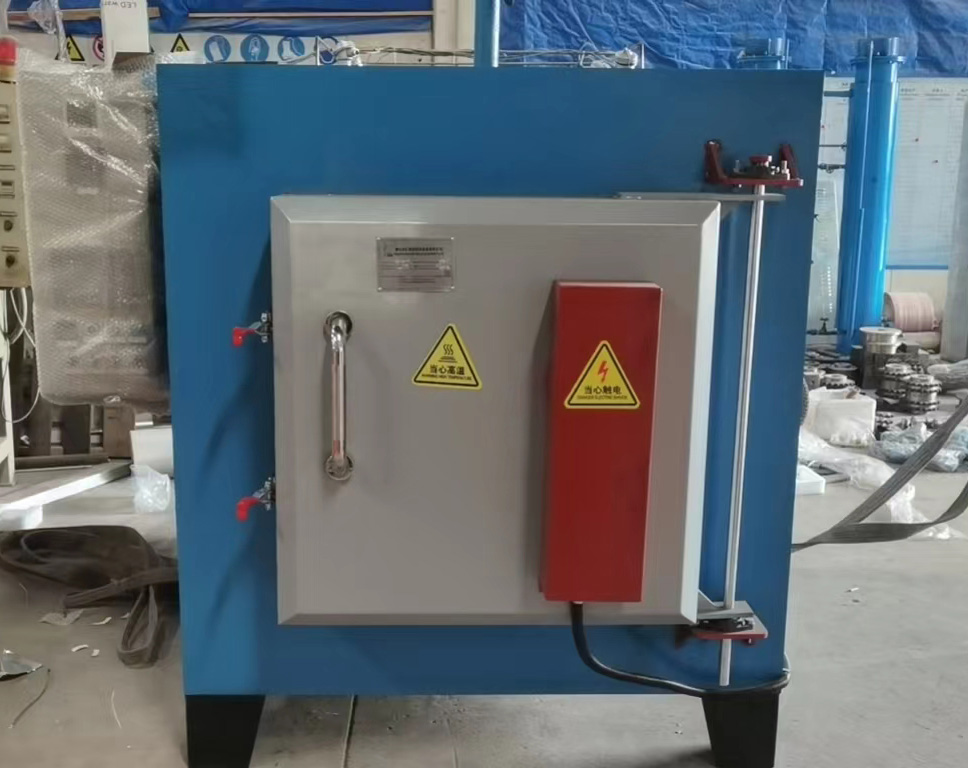Why Can't the Same Box-type Heat Treatment Furnace Perform Quenching and Tempering Simultaneously
Aug. 09, 2025
The inability of the same box-type heat treatment furnace to conduct quenching and tempering operations simultaneously is primarily based on the following technical principles and process requirements:
1. Fundamental Conflict in Temperature Requirements
Quenching: Metals must be heated above the critical temperature (e.g., typically 820–900°C for carbon steel), followed by rapid cooling (e.g., water quenching or oil quenching) to form high-hardness structures like martensite.
Tempering: Metals must be heated to a temperature far below the critical temperature (e.g., 150–650°C) after quenching, then cooled slowly under insulation to relieve quenching stresses, adjust hardness, and enhance toughness.
Conflict: Quenching requires high temperatures, while tempering demands low temperatures, with no overlapping temperature ranges that the same furnace can accommodate simultaneously.
2. Incompatibility of Cooling Methods
Quenching: Relies on forced rapid cooling (e.g., water spraying or oil immersion), requiring the furnace to be equipped with a cooling system or external quenching media.
Tempering: Requires slow and uniform cooling (e.g., air cooling or slow furnace cooling) to prevent the generation of new stresses.
Conflict: Quenching necessitates external intervention for cooling, whereas tempering requires natural cooling without external forces, making it impossible for the same furnace to implement both cooling modes simultaneously.
3. Opposing Process Objectives
Quenching: Aims for high hardness and strength but results in increased brittleness and residual internal stresses.
Tempering: Seeks to reduce brittleness, eliminate stresses, and adjust hardness to a suitable range.
Conflict: The microstructure formed during quenching requires optimization through tempering, but the two processes alter material properties in opposite directions, preventing simultaneous execution.
4. Furnace Structure and Design Limitations
Temperature Uniformity: Quenching demands highly uniform furnace temperatures (within ±5°C), while tempering has lower uniformity requirements but requires precise control at low temperatures.
Cooling Systems: Quenching furnaces need high-pressure cooling systems, whereas tempering furnaces require minimal or simple ventilation, resulting in significant design differences.
Space Utilization: Quenching requires rapid transfer of workpieces to cooling media, while tempering involves prolonged holding times, making it difficult for the same furnace to balance operational efficiency.
5. Safety Hazards in Practical Operation
Quenching Media Risks: Accidental introduction of quenching media (e.g., water droplets entering a high-temperature furnace) during tempering can cause workpiece cracking or furnace damage.
Thermal Stress Conflicts: Simultaneous quenching and tempering lead to severe temperature fluctuations inside the furnace, inducing thermal stresses in the furnace structure and shortening equipment lifespan.
Alternative Solution: Sequential Processing
Standard Process: Quenching (high-temperature heating + rapid cooling) → Tempering (low-temperature heating + slow cooling), achieved through separate furnaces or batch operations.
Mesh Belt Furnace Design: Continuous production of quenching and tempering can be realized through zoned temperature control, but box-type furnaces cannot adapt due to structural limitations.
Summary
Box-type heat treatment furnaces are designed to meet single-process requirements (e.g., pure quenching or pure tempering). Their temperature control, cooling systems, and operational logic are incompatible with two opposing processes. Forcing their combination not only fails to achieve desired results but may also damage equipment or trigger safety incidents. Therefore, quenching and tempering must be performed sequentially, as dictated by the principles of materials science and heat treatment process specifications.










